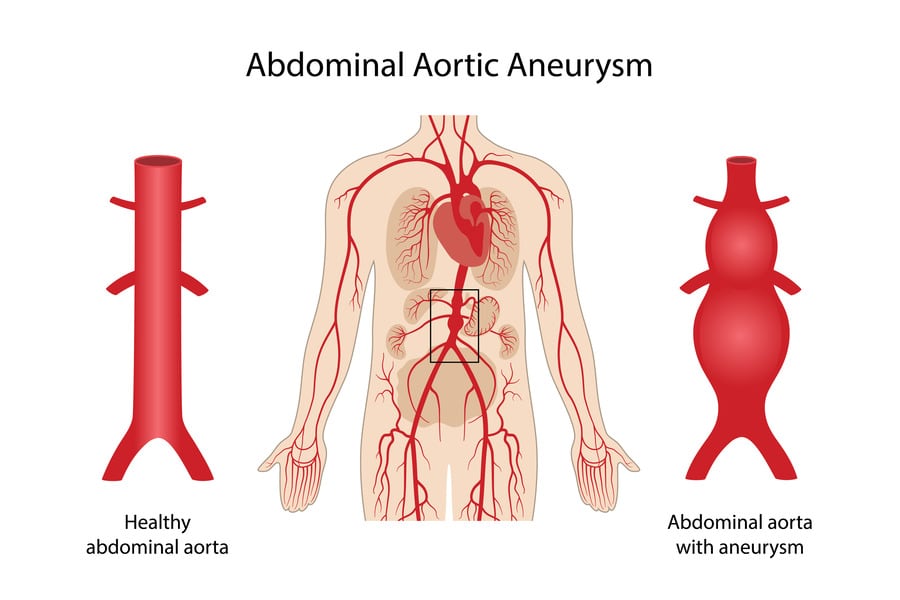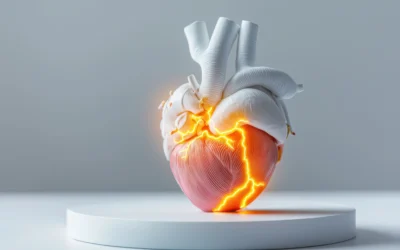The human aorta, responsible for ferrying oxygenated blood from the heart to various parts of the body, is paramount to our circulatory system. However, when a segment of this vital artery, specifically within the abdomen, enlarges or balloons out, it forms what we know as an abdominal aortic aneurysm (AAA). This article delves deeper into the origins, manifestations, and management strategies of this medical anomaly.
Understanding Abdominal Aortic Aneurysm
The formation of an AAA can be visualized as the swelling of a weakened water hose under pressure. As the aneurysm grows, so does the risk of rupture, which can result in a grave medical emergency due to significant internal bleeding.
Origins and Predisposing Elements
Several factors, both genetic and environmental, contribute to the formation of an AAA:
- Atherosclerosis: Often dubbed the silent killer, atherosclerosis involves the deposit of plaques in arterial walls, restricting blood flow and potentially causing arterial wall degeneration.
- Genetic Ties: A familial history of AAAs predisposes individuals to this condition.
- Tobacco Consumption: Beyond known respiratory complications, tobacco can degrade arterial health, exacerbating the risk of AAAs.
- Demographic Factors: Age, especially those above 60, and gender, with men being more prone, play a role.
- High Blood Pressure: Chronic hypertension can inflict incremental damage on arterial walls.
Manifestations of an AAA
Oftentimes, AAAs are clandestine, revealing their presence only at critical junctures. However, when symptoms do surface, they are characterized by:
- A palpable throbbing within the abdomen.
- Persistent pain radiating from the abdomen or the lower back.
- An inexplicable, deep-seated pain in the chest or back.
Diagnostic Strategies
Timely and precise diagnosis can spell the difference between life and death:
- Ultrasound: The primary diagnostic tool, it provides real-time imaging of the aortic region and can track aneurysm growth over time.
- CT Scan: Offering a panoramic view, it can determine the exact size and location of the AAA.
- MRI: Leveraging magnetic fields, MRIs give detailed cross-sections of the aorta, helping doctors plan potential interventions.
Therapeutic Approaches
The chosen treatment modality is contingent upon the aneurysm’s dimensions and its growth trajectory:
- Observational Approach: Regular monitoring via ultrasound is adopted for smaller, stable aneurysms, coupled with lifestyle and dietary changes.
Surgical Interventions
- Open Abdominal Surgery: The traditional approach, it involves excising the diseased aorta segment and substituting it with a synthetic graft.
- Endovascular Stent Grafting: A contemporary alternative, a stent is placed within the aorta to bolster the weakened segment, mitigating the risk of rupture.
Complications & Their Ramifications
An unaddressed AAA can culminate in:
- Rapid internal bleeding, necessitating emergency interventions.
- A state of shock precipitated by significant blood loss.
- Organ failure due to compromised blood supply.
Prophylactic Measures
Prevention, while not absolute, significantly mitigates risks:
- Abstain from tobacco and limit alcohol.
- Adopt a balanced diet and regular exercise to manage blood pressure and cholesterol.
- Regular screenings, especially if there’s a familial predisposition.
While abdominal aortic aneurysms may operate in the shadows, awareness and proactive measures can significantly diminish their threat. Through a blend of modern medicine and informed lifestyle choices, one can effectively navigate and manage the risks associated with AAAs.









